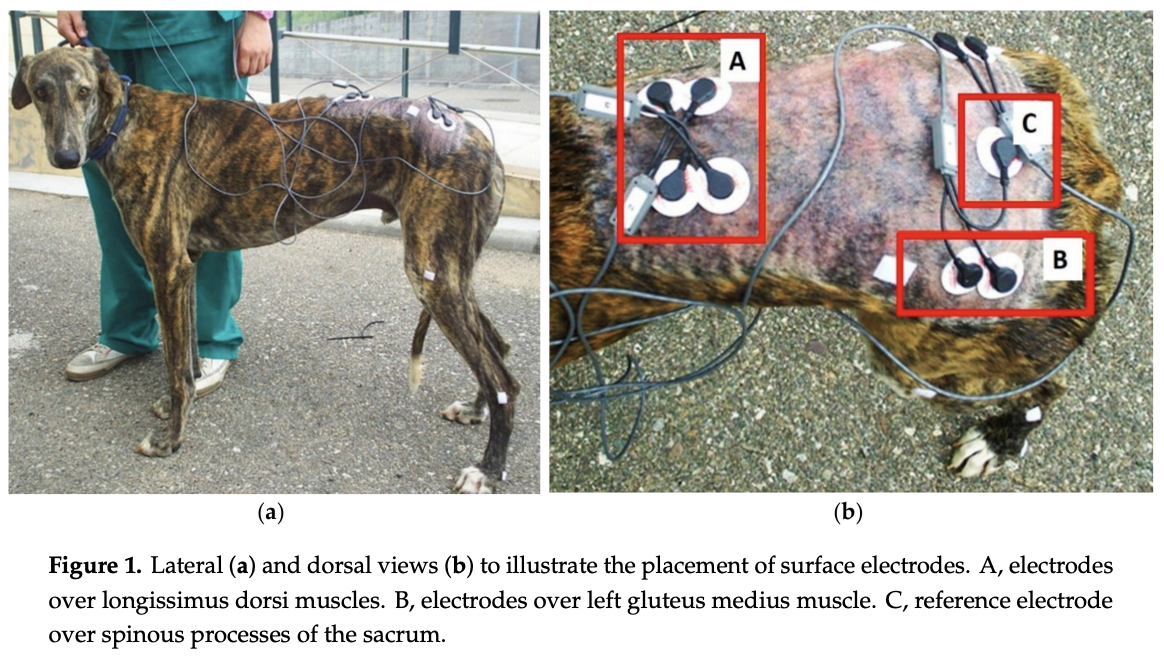Laurie's Blogs.

Jul 2025
Canine Locomotion: Surface Electromyography Insights into Hill Walking Exercise

In the evolving field of canine rehabilitation, understanding the biomechanics of therapeutic exercises is critical for optimizing recovery protocols. A 2020 study by Miró et al., published in Animals, provides valuable insights into the function of the longissimus dorsi (LD) and gluteus medius (GM) muscles in Greyhounds during controlled walking and trotting across varied terrains. Using surface electromyography (sEMG), this research illuminates muscle activation patterns, offering actionable data for veterinarians, veterinary technicians, physical therapists, and others specializing in canine rehabilitation.
Study Design and Methodology
The study involved five healthy adult Spanish Greyhounds, selected for their uniform size and lack of orthopedic issues. The dogs performed leash-controlled walking and trotting on concrete walkways with three conditions: flat, uphill (+7%), and downhill (-7%). sEMG electrodes, placed over the LD and GM muscles.
Key Findings
• Gait Influences Muscle Activity At the same incline, trotting consistently elicited higher mean sEMG activity in the LD muscle compared to walking (p < 0.05).
• Terrain Modulates Muscle Engagement Uphill movement (+7%) significantly increased mean sEMG activity in both LD and GM muscles compared to flat terrain. Conversely, downhill movement (-7%) reduced sEMG activity, consistent with decreased propulsive force requirements.
• Gait-Terrain Interactions The study revealed intriguing overlaps: walking uphill produced sEMG activity levels comparable to trotting on flat or downhill terrain for the GM muscle, suggesting that specific combinations of gait and incline can achieve similar therapeutic outcomes.
Clinical Implications
These findings have direct applications in canine rehabilitation, particularly for conditions like hip dysplasia, osteoarthritis, or spinal disorders. Uphill walking and trotting enhance LD and GM muscle strength, making them ideal for early-stage rehabilitation to build lumbar and hindlimb stability. Downhill exercises, requiring greater neural control for balance and proprioception, are well-suited for patients with proprioceptive deficits or geriatric conditions. The data underscore the importance of terrain-specific exercises to target distinct aspects of motor reeducation and joint kinematics, minimizing the risk of further injury.
Conclusion
By integrating uphill and downhill exercises into rehabilitation programs, clinicians can optimize muscle strengthening and proprioceptive training, tailoring interventions to individual patient needs.
For further details, refer to: Miró, F., et al. (2020). Animals, 10(9), 968. doi:10.3390/ani10090960. Veterinary professionals are encouraged to leverage these insights to enhance rehabilitation outcomes in clinical practice.

